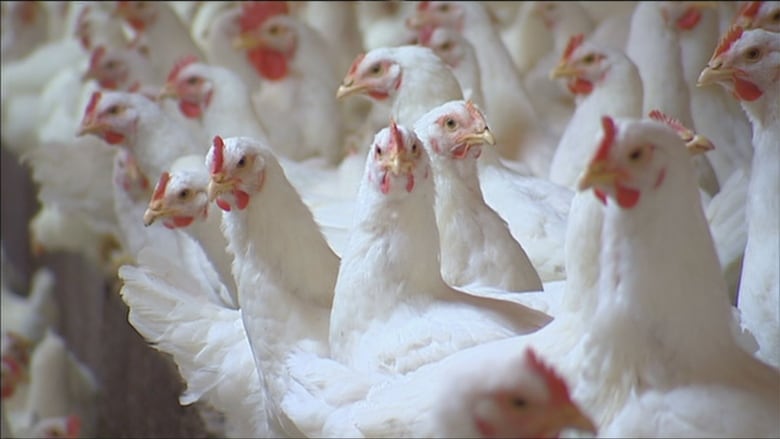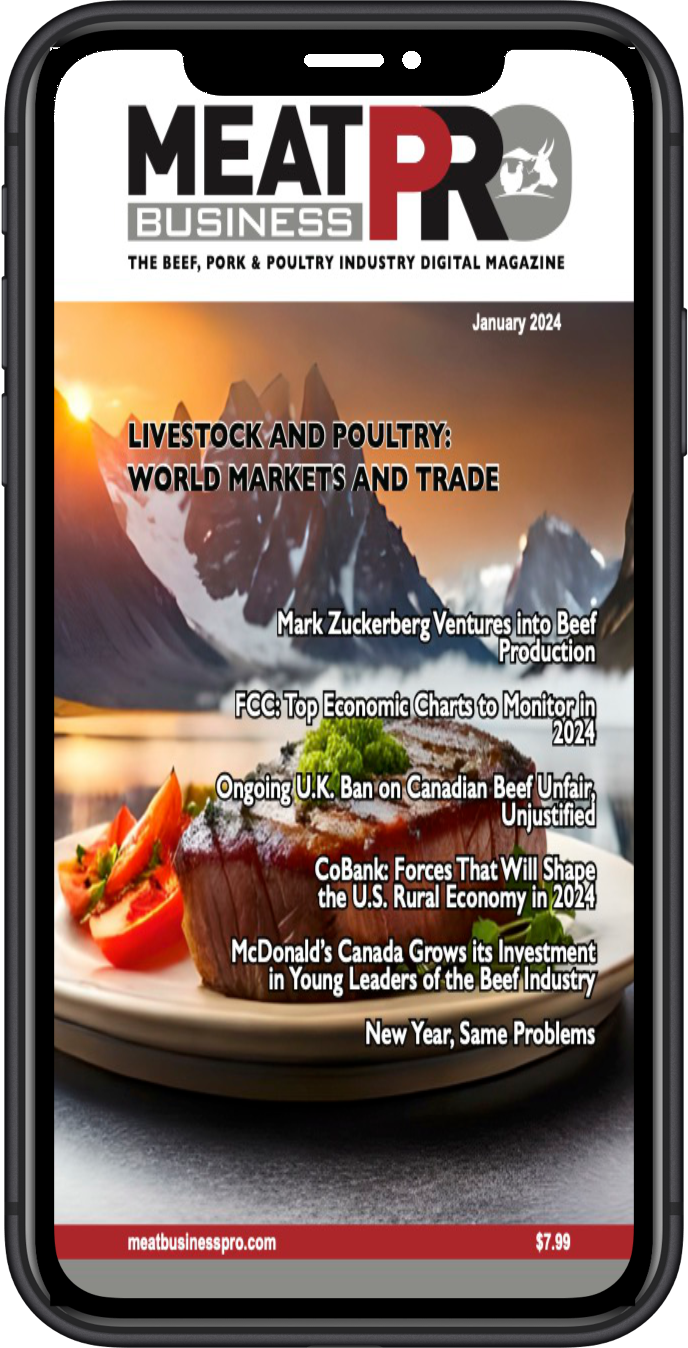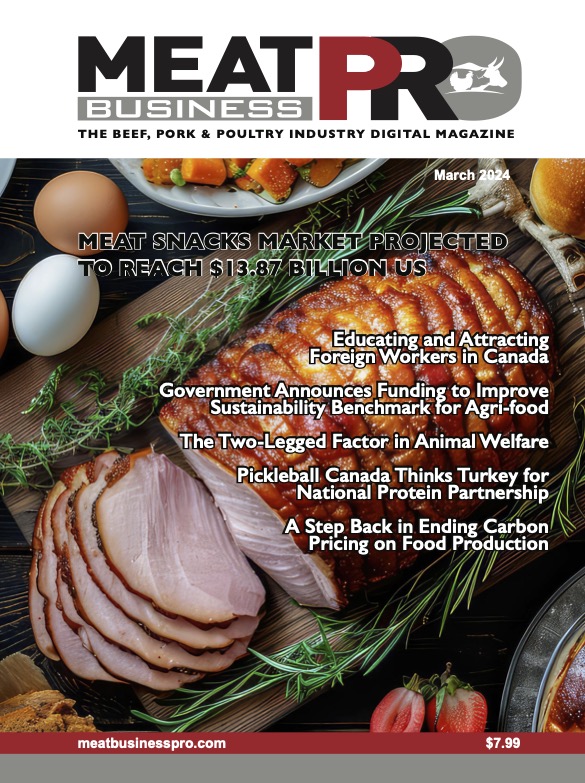Virus-Ready Poultry Producer Can’t Escape Supply Chain Shock

Groupe Westco raises 4 of every 5 chickens in New Brunswick, and now it’s dealing with glut of product
by Jacques Poitras – CBC News
When COVID-19 was declared a pandemic in mid-March, Groupe Westco was ready on the safety side but caught by surprise in their supply chain.
The New Brunswick-based poultry producer, one of the province’s lesser-known business success stories, is a cornerstone of the provincial food supply, raising 80 per cent of the chicken in the province.
So it could never afford to be unprepared for a fast-spreading disease. It just had to ramp up.
“Biosecurity’s really important to protect the birds and to protect the consumer,” said Marco Volpé, the company’s senior manager. “We were already using equipment. We were already using biosecurity measures to prevent the birds from getting sick.”
“I certainly want to give our staff a thank-you for coming to work every day and feeding the people that we’ve fed and people that relied on us for years, and permitting us to keep our clients”
Even pre-pandemic, visitors had to disinfect the soles of their shoes and then put plastic boot-shaped bags over them before stepping into a Westco barn.
Inside, hundreds of chicks scurry around whenever humans intrude in the dimly lit, humid space.
Nothing that touches the ground outside can be tracked into the floor of the barn.
Westco quickly imposed additional measures such as social distancing and more hand-washing, especially at its Baker Brook hatchery.
The hatchery, where thousands of chicks are born every week, is the hub of the entire operation: it’s the start of the life cycle for birds that are trucked to dozens of barns around the region and that are killed and processed about six weeks later.
“If we have one guy here, one person I should say, that has COVID, everybody’s got it,” said Mike Michaud, the hatchery manager.
Closing the facility would be unthinkable. It would cripple the company, disrupting the supply chain for chicken for a large part of Atlantic Canada.
“It’s hard for us to shut it down,” Michaud said. The specialized workforce isn’t easily replaced. “It’s kind of tricky. It’s not like you take somebody off the street to do this job.”
So far, thanks to its precautions and to New Brunswick’s own relatively low COVID-19 case numbers, Groupe Westco has not seen any workers contract the virus.
“We’re very lucky that we don’t have any COVID,” said Thomas Soucy, the CEO. “Everybody’s very happy to be able to keep on working.
Groupe Westco CEO Tom Soucy says raises 80 per cent of the chickens in New Brunswick. (Mike Heenan/CBC)
In fact, that success has presented another challenge during the pandemic: when demand suddenly dropped off, Westco’s carefully calibrated supply chain was disrupted.
What looked like a shortage of chicken was the opposite: a glut of meat on the market that couldn’t reach hungry consumers.
From a small co-op to a major player
Westco started as a small co-operative created by five local chicken farmers operating along the St. John River upstream from Edmundston, a corner of the province wedged between Quebec and northern Maine.
They banded together to pool their buying power with suppliers.
Soucy, a University of Western Ontario business school graduate who grew up locally, urged them to think even bigger. They started buying up quota from farmers in southern New Brunswick who were retiring.
The next step was vertical integration: buying into other steps in the supply chain — the slaughtering, packing and selling of chicken — to reap a larger share of the profits from the value of their birds.
They proposed to take a stake in Nadeau Poultry, the chicken processor in the village of Saint-François that had been buying their chickens. It’s owned by Ontario-based Maple Lodge.
When Nadeau rebuffed Westco’s offer, they found another partner, Quebec-based Olymel, to build their own slaughterhouse under a joint venture called Sunnymel.
A decade ago, Nadeau and Sunnymel were locked in a bitter legal battle. The Westco farmers were selling their chickens to another of Olymel’s abattoirs in Quebec while the Sunnymel plant was under construction.
Nadeau tried to stop them, claiming Westco was trying to starve the existing plant out of existence.
Eventually things calmed down and now both processing plants operate, and even co-operate occasionally when one facility is over capacity and can’t take on a shipment from one of its suppliers.
“During tough times we’re able to work together,” Soucy said. Nadeau officials did not respond to interview requests last week.
Westco has now become one of the dominant players in the Canadian poultry sector, with operations in six provinces. The company holds more provincially-regulated chicken quota than any other poultry producer in the country.
“Our reach is pretty significant,” Soucy said matter-of-factly during an interview in the wood-panelled Westco boardroom at the head office in Saint-François.
The company slaughters 80 per cent of the chickens raised in New Brunswick, 30 per cent of those in Nova Scotia and between 15 and 20 per cent of those on Prince Edward Island. It has operations as far west as Manitoba.
Westco also raises and processes turkeys, is a co-owner of Maritime Pride eggs, which sells 70 per cent of the eggs in the Maritimes, and invests in other non-poultry ventures.
But raising and selling chicken is still the heart of the operation.
Dozens of its massive barns, measuring 122 metres by 12 metres, dot the winding provincial road that follows the upper reaches of the St. John River.
Each group of a dozen barns raises 500,000 chickens every eight weeks.
It was a smooth-running operation until COVID-19 hit, disrupting a delicate supply-and-demand equation.
Too much supply and not enough capacity
When social distancing and stay-at-home guidelines and orders took effect in March, consumer habits changed overnight.
People stopped going to restaurants, which Westco normally supplies with various kinds of processed chicken in customized cuts. Those sales dropped “almost to nothing,” Soucy said.
At the same time, cooking at home soared, leading to a spike in chicken sales at grocery stores. But that didn’t fully offset the decline in restaurant sales.
Provincial marketing boards slashed their quotas by 15 per cent, leading Westco to close 17 of its barns.
But a lot of chicks and chickens were already in the system, meaning the company suddenly had a surplus of birds it could not sell.
“Most refrigerated or cold space, it’s all full. It’s to a point where it was costing us a lot of money to store in outside storage,” Soucy said.
Customers assumed there was a chicken shortage when they started seeing signs in their local grocery stores limiting per-customer sales, but Soucy said it’s a misperception.
“That’s not because there’s not product in the line,” he said. “We have the same amount of live production that we had, and our demand went down. So there’s more volume available.”
The problem has been a distribution and inventory system that could not cope with a market thrown out of whack by the coronavirus.
Stores “don’t have the capacity or the capabilities of receiving and selling everything that we have,” Soucy said. “The production is there. We’re not running out of food. We just don’t have the proper distribution channels.”
Large grocery store chains operate on just-in-time inventory. Food arrives, is put on the shelves and is sold and replaced with more food that has just arrived.
There’s a limited amount of bays for transport trucks and not a huge amount of storage at the back of the store. There simply isn’t the infrastructure, or the time, to accommodate more shipments of food, even if there’s a demand for it.
“Instead of, for example, getting two tractor trailers from me a week, they may need four. But they may only be able to get three because … they don’t have enough receiving slots,” Soucy said.
“So they will limit the customer. If they didn’t and the customer bought in bulk or bought too much, they would not have enough for everybody.”
A cornerstone of the economy
Westco managed to avoid major job losses when it closed its 17 barns in response to the quota reduction.
It shifted almost all its employees to positions normally filled by summer students. Only a handful of workers were laid off, softening the economic blow.
Westco and Sunnymel employ 350 people and several hundred others work at Nadeau, and the Sunnymel plant alone contributes $400,000 in property tax revenue to the rural municipality of Haut-Madawaska, said Mayor Jean-Pierre Ouellet.
“When you create one job and you know that one job supports three others, that’s quite an economic impact for the Haut-Madawaska. It’s a very major employer and a good employer in the area,” he said.
What the future holds depends on the pandemic.
With economies, and restaurants, reopening, Soucy hopes that by mid-autumn volumes will bounce back and the closed barns can reopen. Marketing boards will soon set new quotas for September.
But recovering the lost 15 per cent won’t happen overnight.
“We don’t think we’re going to be there for many months ahead of us,” Soucy said. “We think there’s some restaurants that won’t make it.”
In the meantime, he said, Westco will keep producing chicken and keep taking precautions to avoid letting COVID-19 into its plants.
The company has given its workers a $2-per-hour pay premium to acknowledge their efforts during the pandemic, including the requirement to wear uncomfortable masks or face shields.
“We’re going through a harder financial time, but we still felt we needed to compensate that in some way,” he said. “It’s a difficult situation. It’s difficult for them.
“I certainly want to give them a thank-you for coming to work every day and feeding the people that we’ve fed and people that relied on us for years, and permitting us to keep our clients.”
CBC News












